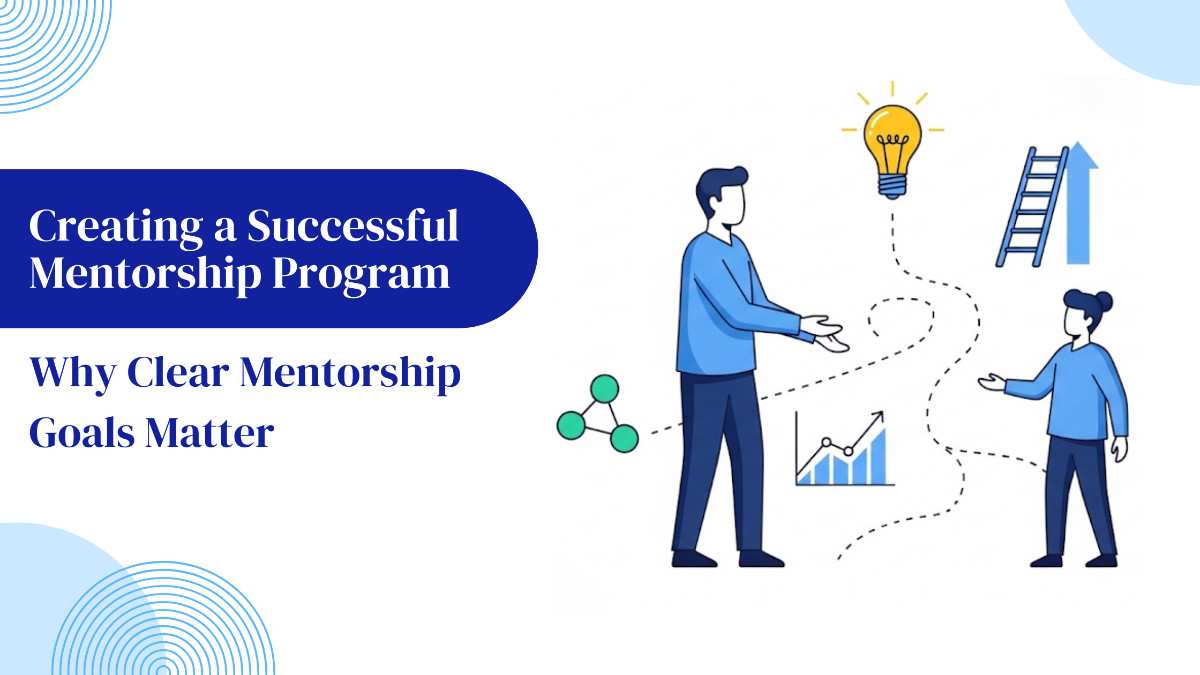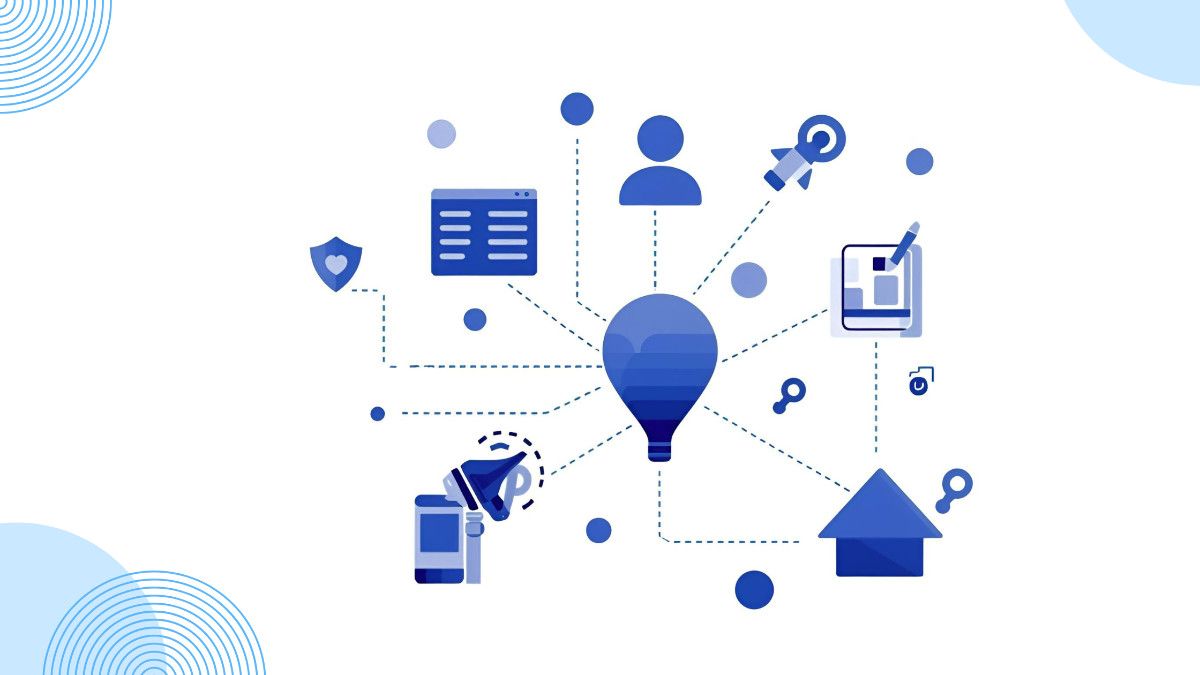Creating a Successful Mentorship Program
Set effective mentorship goals and objectives for successful mentoring programs that drive growth, engagement, and long-term impact.

At the heart of every effective mentorship program is one thing: purpose clarity. Whether developing a workplace mentoring program or pairing students with alumni, defining the goals and objectives of mentorship is the key to long-term effect.
Good mentoring programs are not necessarily about people matching. They are about building relationships that speed up growth—for both the mentee and the mentor. Done well, they enhance employee growth, drive retention, and create a more inclusive environment. To achieve it, though, your program must have structure, strategy, and a tightly defined purpose of mentorship.
Why Clear Mentorship Goals Matter
Every mentoring relationship can use guidance. Without defined goals, discussions can stall and participants will lose interest. Establishing reflective, attainable mentorship objectives lends meaning to the relationship and quantifiable results to measure.
For companies, they serve to reconnect mentoring to broader priorities—such as building leadership pipelines, onboarding more quickly, or driving diversity.
Simultaneously, individual participants derive value from having a tangible goal to achieve. Whether it’s enhancing communication, establishing a network, or achieving clarity on career choices, well-defined mentoring goals enable individuals to own their development.
Shared Mentorship Program Goals and Objectives
Based on the needs of your organization, your program may have one or more of the following:
- Career Development: Guiding mentees through developing professional competencies, career exploration, or advancement to promotions.
- Onboarding & Integration: Assisting new employees in transitioning to company culture and expectations sooner.
- Diversity & Inclusion: Providing opportunities for underrepresented populations to have access to mentorship and career advancement.
- Leadership Readiness: Preparing high-potential staff for leadership positions.
- Retention & Engagement: Establishing trust and support structures to engage employees more with the organization.
- Knowledge Transfer: Helping mature professionals to pass on their knowledge to the next generation.
All of these are goals that can be clearly aligned with mentoring initiatives and are quantifiable by metrics such as increased promotion rates, reduced ramp-up times, or increased engagement levels.
What Mentors and Mentees Should Strive For
A good mentoring relationship also requires common objectives by participants. Here’s how that could play out:
For Mentors:
- Improving as leaders and communicators
- Exchanging experiences and knowledge
- Supporting the development of future leaders
For Mentees:
- Drawing on the expertise of someone who has been there
- Developing confidence and work skills
- Extending their internal network
When both parties’ expectations are clear, the relationship becomes meaningful—a win for both sides. Clear mentor and mentee objectives keep discussions goal-oriented and relevant.
Making It Work: Structure, Strategy, and Support
Developing a high-impact mentoring program does not occur randomly. There is deliberative planning, resources, and infrastructure to serve mentors and mentees from beginning to end.
The following are what are in successful programs:
- Stated Mission and Purpose: A concise statement linking mentoring to your organization’s larger strategy.
- Support for Participants: Manuals, goal-setting guides, or check-in templates to facilitate interactions.
- Tracking Progress: Simplified systems for measuring results—such as feedback surveys or completion milestones.
- Scalable Technology Tools: Having the ability to handle and match dozens of participants in an efficient manner.
This is where solutions such as AlmaShines fit in. It facilitates institutions in handling alumni-led mentorship programs with functions such as automated matching of mentor-mentees, tracking of engagement, and easy communication—all customized according to your mentoring goals. It eliminates the drudgery and enables you to concentrate on what is most important: impact.
How to Set Effective Mentorship Goals (with Examples)
Here are some examples of goals that are realistic and align with various program types:
- New Hire Mentorship Goal: Shorten onboarding of new employees by getting them matched with experienced team members during the first 90 days.
- Diversity Mentorship Goal: Raise leadership representation from underrepresented groups by 20% within 18 months through targeted mentoring.
- Student-Alumni Mentorship Goal: Guide 100 final-year students in career choice through systematic alumni mentorship by year-end.
- Skill-Building Objective: Enhance mentees’ project management confidence via monthly goal-setting and feedback sessions.
All of these are a concrete, quantifiable result that connects back to the overarching goal of the mentoring initiative.
Tracking Progress and Enhancing Over Time
Mentoring is not a one-size-fits-all proposition. To make sure your objectives are being fulfilled, regular feedback is key. Regular check-ins, reflection questions, and completion-program assessments can all assist in measuring what is working—and what to tweak.
For more extensive programs, technology facilitates it. With applications such as AlmaShines, program managers have visibility into participation rates, session frequency, and satisfaction metrics, all in a single location. This provides you with the information you must be able to present results to leadership and ensure continued support.
Final Thoughts
The most successful mentorship programs start with purpose. They align with organizational values, enhance personal development, and make mentorship a normal, powerful aspect of your culture.
Regardless of whether your program is for onboarding, diversity, alumni, or leadership development, having well-defined mentorship goals and objectives is what turns mentorship from an excellent idea into an enduring influence.
Frequently Asked Questions (FAQs)
A mentorship program is a structured initiative that pairs experienced mentors with mentees to support personal or professional development. It provides a framework for knowledge sharing, skill enhancement, and career guidance, contributing to long-term growth for both parties.
Mentoring goals are clear, outcome-driven targets set at the beginning of the mentoring relationship. These may include career advancement, skill development, onboarding support, or building leadership capabilities—each aligned with the broader purpose of the mentorship program.
Yes, setting SMART (Specific, Measurable, Achievable, Relevant, and Time-bound) goals helps structure the mentorship journey. These goals ensure progress can be tracked and that each session is purposeful and focused on measurable development.
Institutions can streamline mentorship programs using platforms like AlmaShines, which support automated mentor-mentee matching, engagement tracking, and integrated communication tools—allowing seamless scaling and measurable impact aligned with mentorship goals and objectives.
Suggested Blogs
Let’s discuss the idea
Join hundreds of companies transforming their corporate communities with Almashines






